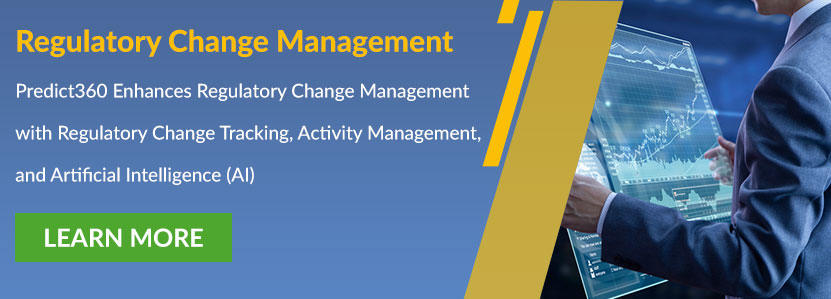Home/ Blog / How Regtech Improves Regulatory Change Assessments and Awareness
The RCM (Regulatory Change Management) process can be broadly split into three major steps. The first step is to be aware of the upcoming changes and assess the changes. The second step is creating a plan that helps the organization to adapt the changes. The third and final step is implementing all the changes that are required. Each step is critical for RCM and has its own requirements and workflows. Regtech solutions help businesses to manage RCM by aiding the teams working on regulatory changes at each of these steps.
The first and very important step to being compliant with upcoming regulatory updates is to be aware of the coming changes and what they mean for the organization. Regtech makes these actions simpler through automation wherever possible and streamlined workflows for processes which cannot be automated and require human supervision.

How Regtech Enhances Regulatory Intelligence
Regtech helps businesses understand upcoming regulatory changes by delivering the latest relevant regulatory intelligence. Many RCM platforms have regulatory intelligence feeds, these feeds have aggregation of different regulatory changes and documents sourced from multiple regulatory intelligence providers in different formats. The Regulatory Change Management system transforms and maps the feeds and provides the information in regulatory feed tables. This means that when an employee assigned to the regulatory change management team or a regulatory expert logs into the system, then immediately get the latest news and updates about the regulatory updates.
This is a simple process which can be replicated manually as well – employees can subscribe to newsletters, news feeds or follow agencies on social media to get news items. However, Regtech takes things to the next level by integrating regulatory intelligence into assessments and activities.
Assessing Regulatory Changes
Regtech also makes it easier for businesses to understand the regulatory changes once the new regulations are available. Regulatory change management platforms download the text of the new regulations straight from the agencies and then compare it to the previous set of regulations. They can instantly detect what has changed and highlight the changes. This means that instead of spending time to understand the changes first, the regulatory experts within the organizations can instantly see everything that has changed.
The usefulness of this feature is enhanced through intelligent parsing. RCM platforms can go beyond simply highlighting changes to highlighting changes that are relevant to the organization using the RCM platform. A creditor maybe interesting in only knowing what has changed for creditors – RCM platforms allow them to parse and filter the regulatory updates as needed.
Regtech also makes it easier for businesses to understand the regulatory changes once the new regulations are available. Share on XAssessing Impact of Changes with Regtech
Being aware of the upcoming changes and understanding the extent of the changes are still relatively simple tasks. The area where Regtech truly shows its value is in assessing how these changes will affect the organization. In the absence of an RCM solution everything must be done manually. This means that once all the regulatory changes are understood, the regulatory experts must then look at everything that will be affected by the new regulatory changes. For example, if a regulation regarding mortgages changed, then everything related to mortgages needs to be reassessed to ensure compliance with the upcoming regulatory changes.
Most financial organizations deal in multiple product and service lines – a retail bank will also offer many adjacent banking services. This means that if there are multiple regulatory updates, their reverberations can be felt across the enterprise. The changes may impact hundreds of policies across the many distinct parts of the organization. It is difficult and time-consuming for the regulatory experts to go through the entire compliance framework of the organization to determine what needs to be updated.
Regtech transforms this process by automatically detecting each document, policy, and process that is affected by the regulatory changes. This is accomplished using a risk map. Each document, risk, process, and task in the system is linked to the regulation it deals with. The advantage is that, if any of those regulations changes, the system can detect instantly and provide a report to the regulatory experts within the organization. The automation in assessing the impact of regulatory changes benefits organizations in multiple ways. It significantly reduces the time required to understand regulatory changes, reduces labor costs of RCM, and also improves the efficiency of regulatory change management processes.
Interested in seeing how your organization can digitally transform its regulatory change management processes? Get in touch with our regulatory experts for a demonstration of the Predict360 Regulatory Change Management solution.
Request a Demo
Complete the form below and our business team will be in touch to schedule a product demo.
By clicking ‘SUBMIT’ you agree to our Privacy Policy.




